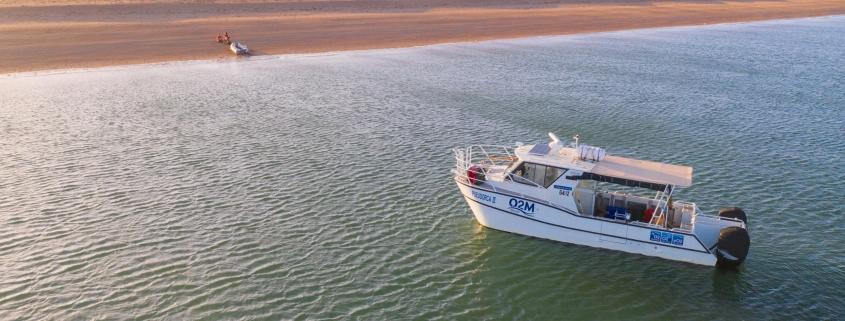WAMSI Science Leads to Jobs Growth
Perth-based environmental and oceanographic consultancy, O2 Marine attributes Western Australian Marine Science Institution dredging science as a key factor that contributed to its rapid organic growth and business success.
When O2 Marine began in 2014 with just two scientists and some big ideas to fill a gap in the niche areas of marine environmental monitoring and assessment advice, the timing couldn’t have been better.
By 2017 the results from the Western Australian Marine Science Institution’s (WAMSI’s) five-years of research into environmental pressures, response and ecological sensitivity from dredging operations off the Pilbara coast, including ground-breaking experiments in the lab, had begun to hit the desk of the State’s environmental regulators.
The new understanding of environmental effects and windows of opportunity provided a significant improvement in the certainty around environmental management of dredging operations in Western Australia.
At the time, O2 Marine was working with Onslow Marine Support Base Pty. Ltd. on a ~1M cubic metre dredging proposal to allow offshore vessels to access the newly constructed Beadon Creek Maritime Facility.
O2 Marine Managing Director, Chris Lane says the WAMSI research was directly applicable to some of the benthic communities and habitats the project could potentially impact.
“The Environmental Protection Authority encouraged us to incorporate the WAMSI dredging science into the assessment,” Chris Lane said. “In doing so, we were able to use real data from Chevron’s Wheatstone project to predict the impacts and experimental laboratory data to define an appropriate monitoring and management approach. As a result, the Onslow Marine Support Base received the fastest regulatory approval for a dredging project of that size ever achieved in W.A.. We effectively halved the assessment approval timeframe from 12-18 months down to six months.”
Chris Lane attributes the opportunity to leverage the WAMSI research as a significant catalyst which effectively put O2 Marine on the map.
“Being able to leverage that science made clients sit up and take notice of what could be achieved by a West Australian small business,” Chris said. “Off the back of this client recognition and with a lot of hard work, O2 Marine has created nearly 40 new jobs, expanded our service offering to include metocean and hydrographic services and achieved annual revenue growth of over 90% per annum. Having that science readily available made it a lot easier to assist our clients in fast-tracking environmental approvals. It was the trigger for us to grow and get that market share.”
In February of 2018 the EPA confirmed that the Onslow Marine Support Base had been recommended for approval. In a statement issued by the EPA, Deputy Chariman Robert Harvey said:
“The proponent incorporated contemporary and locally relevant dredging science from the Western Australian Marine Science Institution into its predictions and proposed management of the project’s impacts. This means we had a high level of confidence during the assessment.
“The use of the latest dredging science, as well as the conditions identified by the EPA, including the implementation of a Dredging and Spoil Disposal Management Plan, means the proposal can be managed in an environmentally acceptable way,” the statement read.
The WAMSI Dredging Science Node was made possible through $9.5 million invested by Woodside, Chevron and BHP as environmental offsets. A further $9.5 million was co-invested by the WAMSI Joint Venture partners. The Node was also supported through critical data provided by Chevron, Woodside and Rio Tinto Iron Ore.

